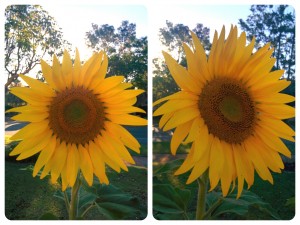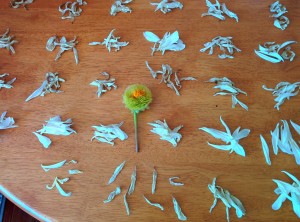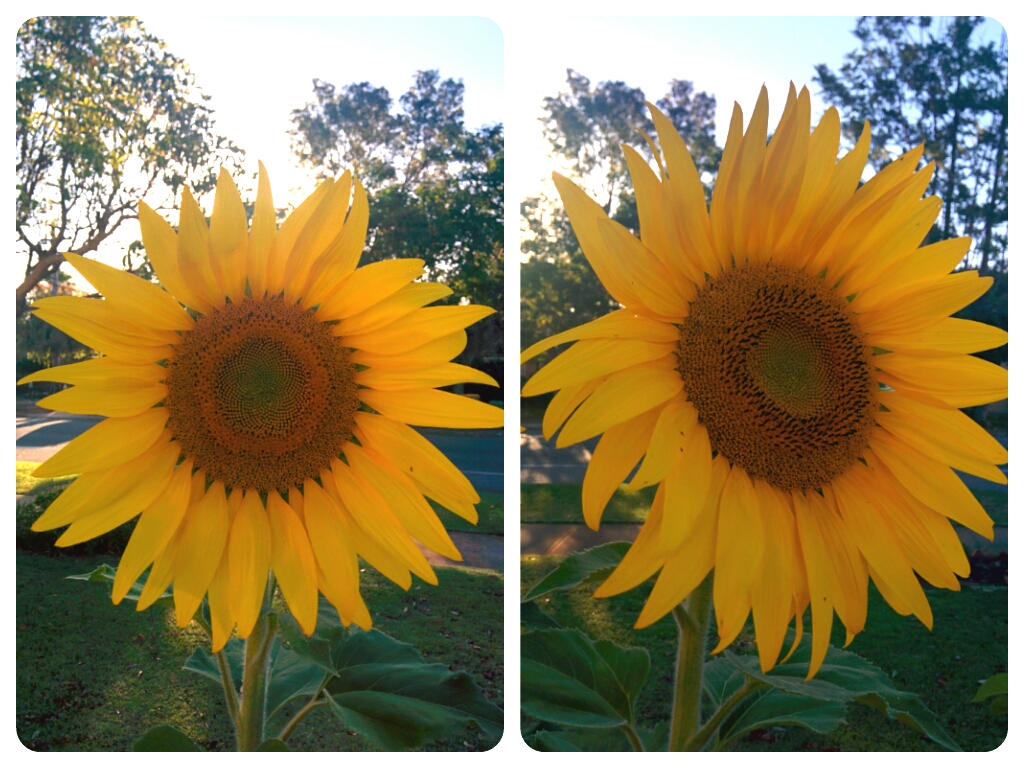We’ve all heard it – flowers know math. The number of petals on flowers are supposed to all be Fibonacci numbers.
How true is this?
You’ve got to admit, it’s almost always true. Technically speaking. Most flowers have five petals, and five is a Fibonacci number.

But perhaps it’s not so much that flowers tend to follow Fibonacci numbers, just that they tend to have a small number of petals. After all, out of the numbers 1 to 10, five are Fibonacci numbers. I’m sure that if most flowers had 4 or 6 or 9 petals instead of five, we’d find some mathematical meaning to their number. People are good at spotting patterns, even when they aren’t there.
To be sure if this pattern is real, we need to test some more flowers. With more petals. Sunflowers are a good choice. These beautiful big blooms have rings of petals that are easy to count. At least, that is, until the local birdlife decides they want a tasty yellow-flavored snack. Once the birds are done with them, sunflowers are less beautiful, and have fewer petals.

I carefully counted the petals on the sunflower on the left, and got 34. A Fibonacci number! However, the flower on the right was larger. When I counted its petals, there were 47. That’s not a Fibonacci number, the Fibonacci number after 34 is 55. Why 47? Is the whole theory wrong?
Then I remembered that 47 is the 8th Lucas number. The Lucas numbers follow the same rule as the Fibonacci numbers – each one is the sum of the previous two – but the Lucas numbers start with 1 and 3 instead of 1 and 1. The first few are 1, 3, 4, 7 and 11, then 18 and 29 and my sunflower’s 47.
Now, that’s too much of a coincidence, in my opinion, to dismiss. Two sunflowers, grown from the very same packet of seeds, one grows a Fibonacci number of petals, the other a Lucas number. Two numbers, from two very closely related sequences. Other sunflowers from different seed packets also grew Fibonacci numbers of petals – except for the odd one here and there that had only 20. Unless, perhaps, they’d just lost a petal?

We had other flowers in the garden with many petals. Counting the petals of these flowers is, sadly, a destructive process. I was able, after much pleading, to get permission to count the petals of the Dahlia shown above – but only after it was starting to dry up. My son was less keen to let me pluck one of the Marigolds – he’d planted them, and he’s very proud of them.
I’m not even going to ask about the rose.
I picked the Dahlia most past its use-by date, and counted its petals carefully. That was the end of that Dahlia.

In the end, I counted 273 petals. The nearest Fibonacci numbers are 233 and 377, and the nearest Lucas numbers are 199 and 322. Fortunately for my peace of mind, the number of petals I counted was nowhere near any of these – so I can say, definitively, that this type of Dahlia does not grow either a Fibonacci or a Lucas number of petals. I may have missed one or two or maybe even five petals – but not fifty.
In conclusion, some flowers know math. Sunflowers do, at least. The ones with five petals can maybe be given the benefit of the doubt. Dahlias, however, seem to dance to a different drum. The pattern is almost begging to be tested further, to see what flowers follow it, and which do not.
Perhaps, one day, I’ll ask about the rose after all.
One day.
